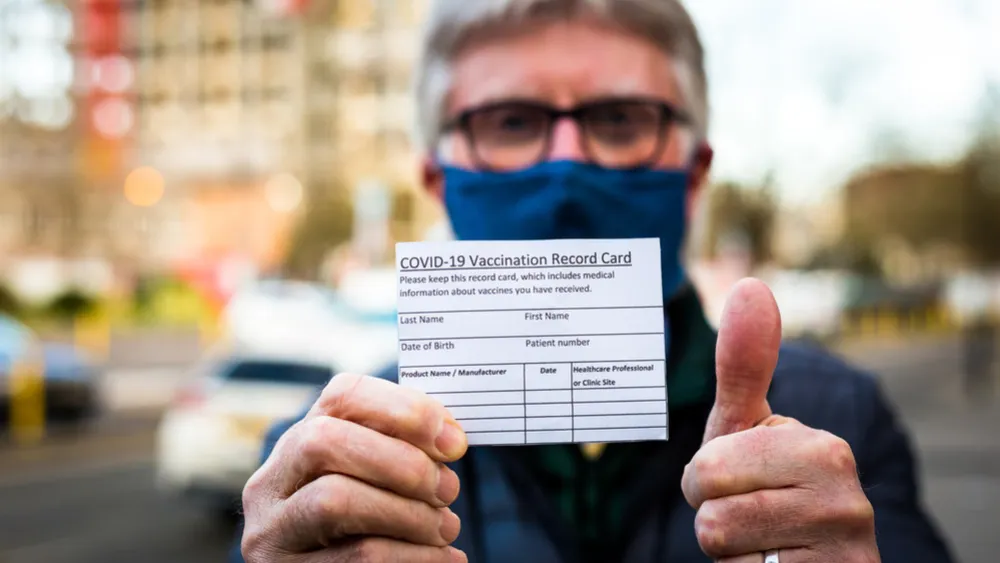




Tackling COVID-19 Vaccine Biases: The Differences in Efficacy and Opinion
Published: March 25, 2021

As COVID-19 vaccine distribution ramps up, so might the likelihood of Americans actually getting to choose which vaccine they receive when eligible. While all three vaccines cleared for emergency use perform extremely well against hospitalizations and deaths, there are some key differences.
A High-Level Overview of all Three Vaccines
The two-dose Pfizer-BioNTech and Moderna vaccines are messenger ribonucleic acid (mRNA) vaccines. The mRNA is like a set of instructions for your cells to create a piece of the “spike protein” that is unique to COVID-19. This spike protein stimulates the creation of antibodies that protect you against COVID-19. It does not contain the live virus or inactivated viral particles. And it cannot give you COVID-19.
The one-dose Johnson & Johnson (J&J) vaccine works by distributing DNA – rather than mRNA – into your cells. This DNA is encased in inactivated adenovirus, which typically causes cold-like symptoms. But again, because these adenovirus particles are inactive, they can’t replicate or make you sick. Like mRNA vaccines, this DNA vaccine provides your body with instructions on how to create that same spike protein used to fight off COVID-19.
While the Pfizer and Moderna vaccines are more than 95% effective at preventing mild to moderate disease, the J&J is 72% effective in U.S. studies. When you compare those percentages, it’s easy to understand some people’s concerns and hesitancy over getting the “less effective” vaccine. But when it comes to preventing hospitalizations and deaths, studies indicate that all three vaccines are nearly perfect with close to 100% efficacy over time.
More Talk on Efficacy, and Weighing the Pros and Cons
J&J is in the process of conducting a two-dose trial, which could further boost its efficacy against mild to moderate disease. But its current one-and-done approach to vaccination is a huge selling point for:
- College students who may soon be leaving for school
- Employees who travel for work or have jobs that don’t allow flexibility when it’s time for a second shot
- Individuals who lead busy lives, or those who’ve already been diagnosed with COVID-19 and may have already acquired some natural immunity
- People with an aversion to needles
In trials, the J&J vaccine showed a strong immune response after just one dose, but evidence also suggests this: That immune response may actually continue increasing well after recipients are considered fully vaccinated – two weeks after the shot. While that evidence doesn’t necessarily make the J&J vaccine superior to Moderna’s or Pfizer’s, it should provide peace of mind to those who’ve been hesitant about a one-dose vaccine.
If, however, you’re in the camp that thinks one less dose means you’re less likely to develop vaccine side effects, think again. Many J&J vaccine recipients have reported side effects similar to those associated with the mRNA vaccines – especially the second dose. Those side effects include:
- Chills and/or fever
- Fatigue
- Headache
- Muscle aches
- Nausea
- Pain, redness or swelling at the injection site
By now, you’re likely aware that experiencing side effects is a good thing! It’s a sign that your immune system has gone into full attack mode to fight what it sees bad, foreign and harmful.
Keep in mind: There are ways to help minimize some of those side effects and help you stay comfortable after the fact. Plan ahead if you can. Take the day off of work after your vaccination or plan to get vaccinated on a Friday. Don’t let the threat of possible side effects delay you from getting vaccinated.
The Variant Dilemma and Difference in Trials
The J&J vaccine trials were conducted at a different time than the mRNA trials – much later in the pandemic, when there were greater numbers of infections and the presence of variant strains (which seem to be more contagious). Would the Pfizer and Moderna vaccines do as well under similar circumstances? We don’t know. Are the mRNA vaccine efficacy numbers truly greater even though they were done early in the pandemic with fewer infections and no variant strains? Again, we don’t know. While it’s believed that all three vaccines provide some level protection against COVID-19 variants, the difference in trials may tell us less about how well the mRNA vaccines hold up against them.
J&J’s trials also included more diverse participants than the mRNA trials, including more:
- Blacks
- Latinos
- Individuals older than 60
- Individuals with underlying health conditions
It goes without saying, but timing, the prevalence of variants and a diverse population all play a role in determining vaccine efficacy.
Not the Time To Wait It Out
So, what vaccine do I recommend? All of them.
If you do get a choice when your time comes, great. Consider that a luxury. If you don’t, let me be clear: The best vaccine is the one you’re offered first. Don’t think for a minute that if you wait a bit longer, the vaccine you want will eventually become available. That’s not a guarantee, and it’s a rather dangerous gamble.
If you still have concerns about the vaccine you’re being offered, reach out to your provider. But remember: The sooner everyone gets vaccinated – with whatever percentage of protection – the sooner we can prevent more serious infections, more deaths and the emergence of additional variants. We’re absolutely in the home stretch, but we need everyone’s participation and now.
More Resources
- Learn how to minimize side effects and maximize efficacy of the COVID-19 vaccine.
- Read one physician’s vaccination plea to the Black community.
- Help older adults adjust to changes after their COVID-19 vaccine.
- Find answers to common questions about life after the COVID-19 vaccine.
- Read the latest articles and information regarding COVID-19.


